Last visited June, 2016
The lower Omo Valley is inscribed as an archaeological site in the UNESCO World Heritage list, but it’s not the archaeological finds that have been bringing travelers here for the last 30 years. The Valley is home to more than a dozen tribes that have miraculously managed to preserve their traditional lifestyles and cultures, and it is the opportunity to experience these diverse and fascinating people that brings travelers to this remote part of Ethiopia. I have been to Omo Valley twice and love the area and its people so much, I am sure I will be back again. To be honest, this is by no means an easy trip, but done right it can be a most rewarding experience.
Make no mistake, there is a right and wrong way to visit Omo Valley and the temptation to sacrifice experience for comfort can be pretty high. Try not to give in.
First, consider the distance and logistics of getting here. There is no airport serving Jinka, the largest town of the area, although there is one under construction. You can fly from Addis Ababa to Arba Minch, then drive for 5-6 hours from there via Konso to Jinka and the valley. Alternatively, you can drive from Addis to Arba Minch in about 8 hours. I’ve done both and prefer the drive, as it gives you the chance to see some beautiful country.
Second, the most important decision for this trip is choosing the right guide. I have read about tours that are based in hotels and lodges, with tourists driven in to tribal villages for a few hours to take pictures of the locals and go. The most apt description of this practice is “human safari”. My friends and I were quite fortunate to find Emanuel (Emany) Cheneke of Explore Omo Valley, who organized a mix of hotel nights and overnight stays in tribal villages with the Hamer, Bena, Mursi and Ari for us, as well as a night in Mago National Park on my first trip. I cannot recommend Emany enough. He is from the area, takes great pride in introducing this part of the world to guests, is well-known and respected by the tribes, and is overall just a great guy. Whether you use his services or find somebody else, be sure that your itinerary includes at least a few nights camping with the tribes in their villages. Doing short visits during the day will make it really hard to experience the amazing hospitality of people here, something you have to live to believe. Camping overnight allows you to spend some time learning the tribal culture, sharing drinks and perhaps a meal, as well as laughs with your hosts, and not just observe tribal life in the Omo, but feel like you are a part of it. The first time I ate goat was in a Hamer village, cooked by the head of the family we were staying with and it was one of the most memorable meals of my life and quite delicious.
Most hotels in the area are very basic, but there are some good options, like Buska Lodge in Turmi and it’s a good to book a night or two in places like this to recharge your batteries, literally and otherwise. My friends and I did make the mistake of getting too much into Highland Queen, a cheap local whiskey during our stay here, and ended up paying dearly for that the following morning.
And this leads to my third point – be prepared to spend a lot of time in places with no hot showers, no electricity, no way of checking your social media feeds. But you will see how content the people here are without the modern conveniences we are all so used to, and with the right attitude, it will be just another enjoyable aspect of the trip.
Finally, this is not a museum, nor is it some real-world garden of Eden. Life here is not easy, and there are possibilities for real conflict and real problems. As a visitor, the only way this will likely affect you is that you may need to adjust your itinerary to the circumstances and this is where a good local guide will be of tremendous value. As an example, we had to cancel a planned visit to the Arbore tribe on my second trip, as they were in an open conflict with their Hamer neighbors. Likewise, a conflict between the Hamer and the local authorities made it inadvisable to camp at the ranger station in Mago National Park on our second trip. Emany was always aware of these issues and prepared with alternative plans.
This is also an area that is changing rapidly, and tourism is certainly a big driver of that change, but also a factor in the protection of these unique cultures. On our trips, my friends and I have had a few debates on whether we are polluting these cultures with the technology we bring. At the end of the day we settled on an understanding that change here will happen regardless of what we do or don’t do, but that it is important to be responsible and conscious of what you bring here.
There is a lot to appreciate in the Omo Valley and one of the reasons I will be coming back here is that over the course of two trips, I didn’t get to visit all the tribes of the area, but have tremendously enjoyed almost all interactions with the people I did get to meet. Below is a quick introduction to the groups I met on my two trips.
Ari
The Ari were definitely the most modern of the tribes we camped with. They had western clothes and permanent buildings, many had gone to school and some spoke pretty good English. Yet, we were the first tourists to visit the village we were in and try to take photos, which made for a tense first half hour of our stay. Once the ice was broken, however, they enjoyed posing for photographs.
Mursi
Probably the most famous inhabitants of the Omo Valley, in contrast to the Ari, they are visually striking, wear minimal clothes, practice scarification and body painting. Perhaps their most famous feature are the lip plates their women wear. The Mursi have a reputation for being fierce warriors and an aggressive tribe, including towards tourists.
Like most generalizations I don’t really think this one is quite true. It is true that the Mursi know that tourists want to take photos. They also know that they will get paid for photos the tourists take. A “per click” charge is common practice. So when you come for a couple of hours, they want to get as many photos taken as possible to maximize their earnings. So you could easily find yourself surrounded by group of Mursi all demanding that you take their photo, in order to charge you. On my first trip, one of my friends found this so unpleasant, that despite being a huge photography enthusiast, she lost all interest in taking any photos and put her camera away for the duration of our visit.
This is not the experience we had the on my second trip when we camped in a Mursi village. Since our hosts knew we were staying the night, there was much less pressure to get their photo taken right away, and while people were still surrounding us asking for photos it was not the overwhelming experience of my first visit.
And when the sun went down and the cameras were put away, we sat by the campfire with some young Mursi men and had a terrific time writing out a basic English-Mursi dictionary, laughing and trying to understand each other with no knowledge of the each others’ language. Overall, we found the Mursi direct, but jovial and a lot of fun.
Hamer
The Hamer or Hamar tribe are another famous and visually distinctive ethnic group in the Omo Valley and fantastic hosts. The women wear elaborately decorated goat skins decorated with cowries, and if they are married, thick copper necklaces. They decorate their hair with a red mixture of clay and butter. Hamer men also wear read and black beads, but are usually dressed more simply. However, when a man wears a clay hair bun, it is an indication that he has killed a dangerous animal or even a person within the past year.
The Hamer are an industrious people and survive on raising cattle, growing crops (sorgum and maize). Unlike many of the other tribes, they don’t drink away the money they get from visitors, choosing to invest it in cattle instead. We were also treated to some of the local honey, when one of our hosts climbed a tree and pulled out a honeycomb with his bare hands ignoring the stings. That was the best honey I have ever had.
One thing the Hamer are famous for is bull jumping – an initiation ceremony, which every Hamer man goes through before entering adulthood. I was fortunate enough to attend this on my first trip here and it was a fascinating experience.
Dassanech
The Dassanech live right on the river and you have to cross the Omo in a dugout canoe to access their village. The area is also very close to the border with Kenya, so the government makes a point of registering visitors, so be sure to have your passport on you when you come here. The tribe lives in temporary villages, which are disassembled and moved every few years.
We never camped with the Dassanech, in part I am sure, because despite the river and Lake Turkana being close by, they live in a dry dusty area. The two times we visited in the afternoon, the men were off grazing cattle and only the women and children were in the village.
Unfortunately, not camping with the tribe made for quite a difference in our interaction with them. Like the Mursi, the women and girls kept asking to get their photo taken. On my first visit here, we were able to just pay an amount for the entire village to share, which helped tremendously, as nobody was competing for attention anymore. We did not have such luck on my second visit. At the end of the day, I ended up taking a few portrait shots and walking back to the river, as the interaction with the Dassanech felt more like a transaction.
Bena
Emany always saved the best tribe to visit for last – both of my trips to the Omo Valley ended with stays at Bena villages and they were the most welcoming people in the Omo, which is saying a lot. Similar in many ways and related to the Hamer, the Bena are even more hospitable and camping with this tribe is always a pleasure filled not just with laughs at a campfire and trying to communicate in each others languages, but also music from a small battery-powered stereo, singing and dancing. On our first night the tribe were singing a song, which all of us were humming to ourselves the following day. When we tried to get Emany to tell us the lyrics, we found out that the song was largely improvised with just a few key words and the rest of the words just spur-of-the-moment rhymes.
Our time with the Bena always came at the end of the trip and both times we were really sorry to see the experience end.
Markets
No visit to the Omo Valley is complete without experiencing at least one local market. The markets are a weekly event in each town and your guide will know when a particular town’s market days are. I have been on a market day on each of my two trips and they are always fascinating, not to mention a great opportunity to buy some authentic souvenirs of the area.
If you want to bring something as a present for your hosts, one thing I found worked enormously well was soccer balls. Chances are the kids in a tribal village that you give the ball to will never have had one, nor seen a football game, but you will be amazed by how quickly they will figure out what to do and get an energetic game going. The problem is that balls you can buy locally don’t last very long in the bush. So if you can afford it and have room in your luggage, it’s best to buy quality balls at home and bring them over. Your best bet is to actually get extra durable balls. On my first trip I was lucky enough to have a few “indestructible” footballs made by One World Futbol and they were a huge hit. Hopefully they will last much longer than regular balls.
One final tip – malaria is a real threat here, especially in rainy season so be sure to take your antimalarials. We had an Ethiopian member of our party come down with it on our second trip and it was frightening. Having said this, the local hospital in Konso had him diagnosed in a matter of minutes and gave him pills that had him back on his feet within two days, but as a traveler, the last thing you want to do is waste two days here fighting a preventable disease.
If you would like to learn more on Omo Valley life before your trip, check out this documentary short by Sam Wood. Also, if you have an interest in photography and want to combine your Omo Valley experience with improving your skills, consider applying for the workshop offered once a year by the incredibly talented Trupal Pandya. I took his workshop on my second trip to the Omo and it was a fantastic learning experience and a great time with some terrific people. Most of the photos in this post were made during that trip.


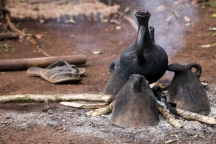
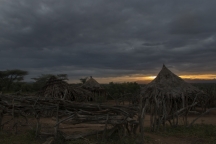



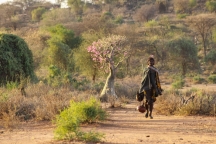

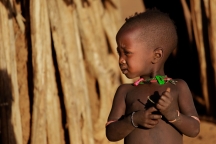
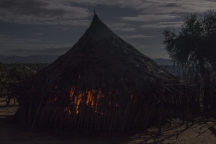
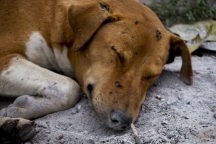
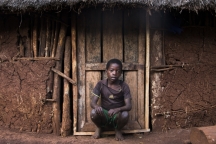


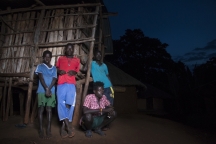
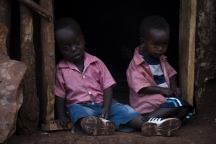

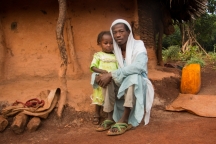



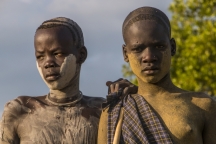

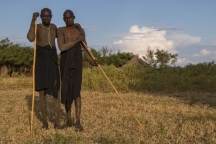








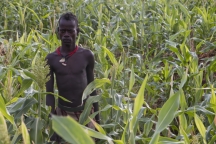

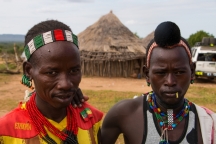



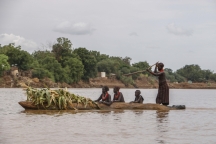
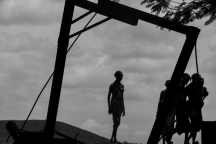
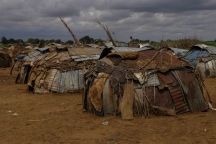


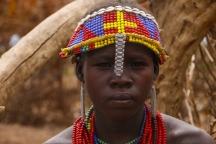

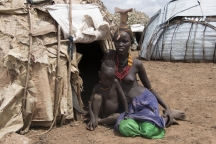
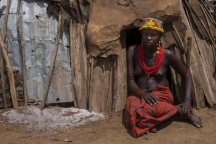
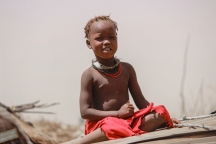

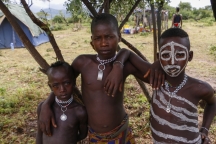

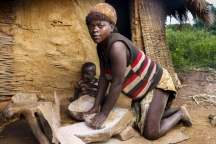
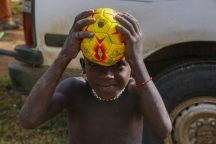


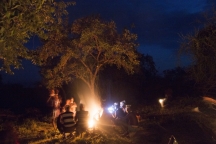
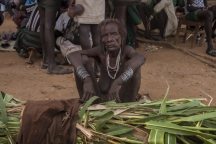
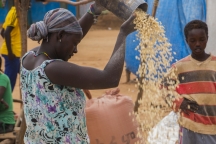
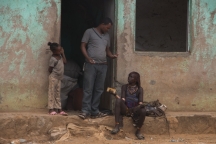


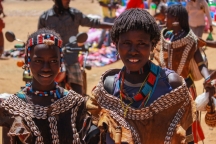

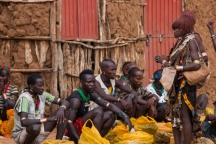
Yak,
These pics really moved me. I can’t believe the quality – its like you have just taken them from Natgeo. OMG bday boy, these are really incredible and you are getting really good….
I am going to look at other folders asap!
XXOO